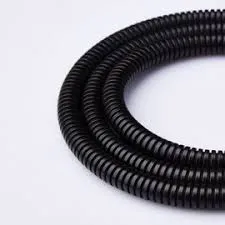Compact Drag Chain for Efficient Cable Management Solutions
Understanding Small Drag Chains A Key Component in Cable Management
In the world of machinery and automation, the importance of efficient cable management cannot be overstated. One of the most effective solutions for managing cables in moving applications is the small drag chain. Small drag chains, also known as cable carriers or energy chains, play a critical role in ensuring that cables and hoses are organized and protected during operation. This article delves into the significance of small drag chains, their design, benefits, and applications.
What are Small Drag Chains?
Small drag chains are devices used to guide and protect flexible cables and hoses in automated machines and various equipment. These chains consist of a series of linked segments that form a hollow channel, allowing cables and hoses to move freely through them. The design of the small drag chain allows for smooth movement and flexibility while minimizing wear and tear on the cables contained within.
These chains come in various sizes, but the small designation refers to their compact dimensions, making them suitable for applications where space is at a premium. They are typically made from materials such as plastic or lightweight metals, ensuring they contribute minimal additional weight to the overall system.
Design and Functionality
The design of small drag chains is engineered for versatility and efficiency. One of the key features is the open structure that allows for easy installation and routing of cables. This design enables users to quickly add or remove cables as needed without disassembling the entire system. Additionally, some small drag chains feature integrated cable guides and strain reliefs, which further enhance their functionality and protection capabilities.
The channels of small drag chains are designed to minimize friction and prevent cable damage during movement. This is especially important in dynamic applications, such as robotic arms and CNC machines, where the chains are subjected to continuous bending and twisting. The ability to manage different types of cables, including power cables, data cables, and fluid hoses, makes them an invaluable component in many industrial settings.
Benefits of Small Drag Chains
The use of small drag chains offers numerous benefits, making them a popular choice in various industries. Some of the key advantages include
small drag chain

1. Space Efficiency Their compact design allows for the integration of cable management in tight spaces. This is particularly beneficial in smaller machinery or equipment where every inch counts.
2. Protection of Cables Small drag chains protect cables from abrasion, kinks, and other forms of damage that can occur during movement. By keeping cables organized and secured, the risk of maintenance issues is significantly reduced.
3. Improved Flexibility Unlike rigid conduits, small drag chains allow for easy bending and twisting, providing the necessary flexibility for dynamic applications. This ensures that equipment can execute complex movements without straining the cables.
4. Simplified Maintenance The modular design of small drag chains simplifies the process of adding or replacing cables, making maintenance and upgrades hassle-free. This can lead to decreased downtime and increased productivity.
5. Customization Options Many suppliers offer customizable options to meet specific application needs. This can include varying link sizes, materials, and colors, allowing businesses to tailor the solution to their unique environment.
Applications of Small Drag Chains
Small drag chains are utilized across a wide range of industries and applications. Some common uses include
- Robotics In robotic arms and automated machines, small drag chains manage the various cables needed for power and control, ensuring smooth operation without hindrance. - CNC Machines These machines often have moving parts that require intricate cable management to maintain performance and reliability. - Manufacturing In assembly lines, small drag chains help to organize and protect cables that control machinery or provide power to tools. - Transport Systems Automated guided vehicles (AGVs) and conveyors use small drag chains to keep their cables organized during movement.
Conclusion
Small drag chains are an essential component in modern cable management solutions. Their design, functionality, and benefits make them an ideal choice for a range of applications, from robotics to CNC machining. By efficiently organizing and protecting cables, small drag chains contribute to the reliability and efficiency of automated systems. As technology continues to advance, the role of small drag chains in facilitating seamless operations will undoubtedly grow, making them indispensable in the quest for greater automation and productivity.








